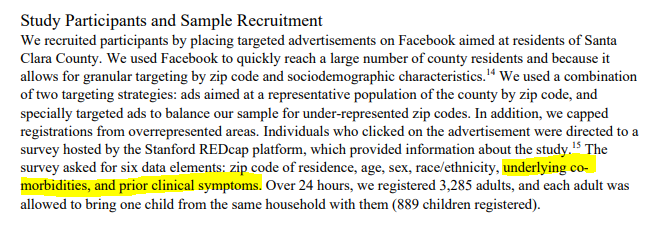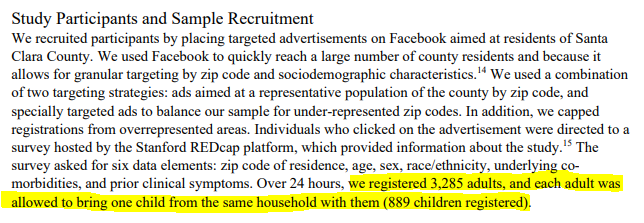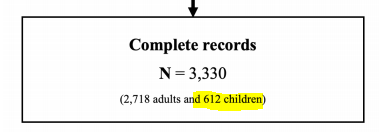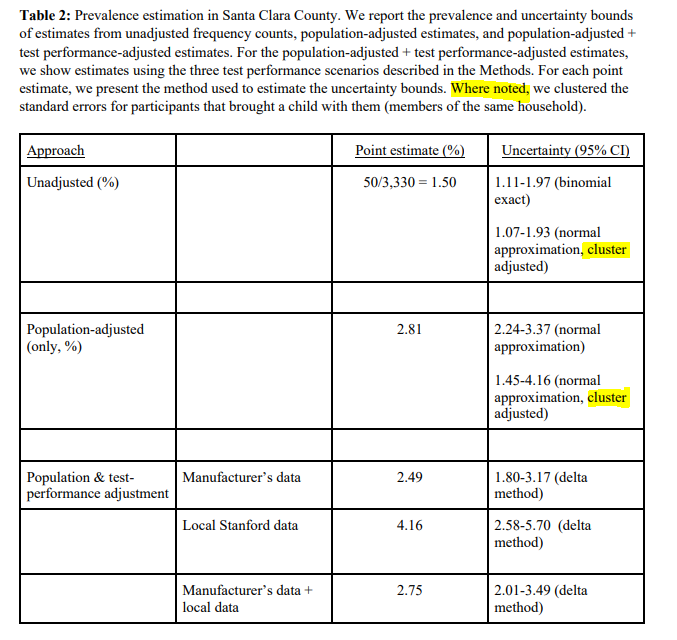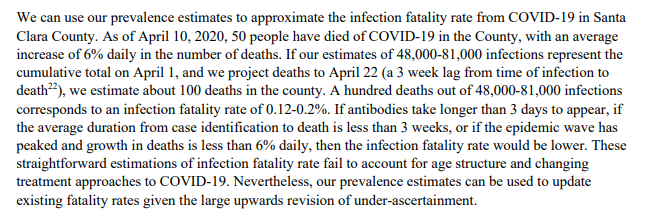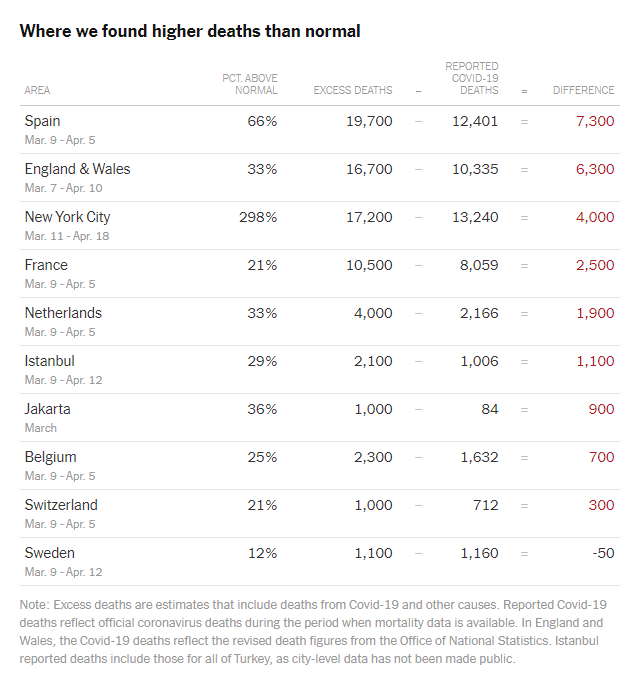I keep seeing references to the "COVID-19 Antibody Seroprevalence" studies from Stanford—who wouldn& #39;t want to believe the infected # was 50-85x bigger than the confirmed count, meaning *far* lower hospitalization and fatality rates?—but the study has several big flaws.
/1
/1
The Santa Clara study: https://www.medrxiv.org/content/10.1101/2020.04.14.20062463v1">https://www.medrxiv.org/content/1... 3,330 recruited from Facebook, 50 tested positive.
Flaw #1: iffy way to get subjects, maybe it can be adjusted. But the adjustments make no sense—they assume infection rates correspond to zip code, sex, and race, yet not age. https://abs.twimg.com/emoji/v2/... draggable="false" alt="🤔" title="Thinking face" aria-label="Emoji: Thinking face">
https://abs.twimg.com/emoji/v2/... draggable="false" alt="🤔" title="Thinking face" aria-label="Emoji: Thinking face">
/2
Flaw #1: iffy way to get subjects, maybe it can be adjusted. But the adjustments make no sense—they assume infection rates correspond to zip code, sex, and race, yet not age.
/2
Flaw #2: it& #39;s always odd to see data gathered and then not presented, like with "co-morbidities" and "prior clinical symptoms." For all we know, those include a confirmed SARS-CoV-2 infection. It& #39;s the type of inexplicable omission that raises eyebrows.
/3
/3
Flaw #3: they included multiple members of the same household. Of the 3,330 subjects, 1,224 of them were adult+child pairs. Accounting for that single fact makes their confidence interval more than two times wider—but they disregarded "clustering" for their final results.
/4
/4
Flaw #4: a whole lot is riding on the performance of this unapproved SARS-CoV-2 antibody test, with only very small sample numbers even provided. They thought the test was 99.5% specific. They admit if it& #39;s 97.9% specific or less, then, poof, their results evaporate entirely. /5
That& #39;s standard statistics. If you& #39;re looking for something rare, and your test produces even a small percent of false positives, then *most* of your positives won& #39;t be real.
And then Flaw #5: seems some of their math is off, too. Here& #39;s a thread.
/6 https://twitter.com/jjcherian/status/1251272333177880576">https://twitter.com/jjcherian...
And then Flaw #5: seems some of their math is off, too. Here& #39;s a thread.
/6 https://twitter.com/jjcherian/status/1251272333177880576">https://twitter.com/jjcherian...
Flaw #6: the authors& #39; approach to testing uncertainty is off. Run it again using the Bayesian method they claim, like in this thread, and the authors& #39; own data shows COVID-19 antibody seroprevalence between 0%(!) and <2%.
/7 https://twitter.com/taaltree/status/1251929545566904320">https://twitter.com/taaltree/...
/7 https://twitter.com/taaltree/status/1251929545566904320">https://twitter.com/taaltree/...
Flaw #7: their whole study supposedly was to show lots of unascertained cases, but, to reach their headline-and-social-media-attracting fatality rate conclusion, they assume 100% of fatalities were properly counted.
That seems unlikely: https://www.nytimes.com/interactive/2020/04/21/world/coronavirus-missing-deaths.html">https://www.nytimes.com/interacti...
/8
That seems unlikely: https://www.nytimes.com/interactive/2020/04/21/world/coronavirus-missing-deaths.html">https://www.nytimes.com/interacti...
/8
I don& #39;t know the true COVID-19 antibody seroprevalence in Santa Clara County or anywhere else, but I know it& #39;s a problem some people are saying "oh, it& #39;s been everywhere, <1% go to hospitals, <0.2% die." The Stanford study doesn& #39;t show that. It doesn& #39;t show anything at all.
/end
/end

 Read on Twitter
Read on Twitter /2" title="The Santa Clara study: https://www.medrxiv.org/content/1... 3,330 recruited from Facebook, 50 tested positive.Flaw #1: iffy way to get subjects, maybe it can be adjusted. But the adjustments make no sense—they assume infection rates correspond to zip code, sex, and race, yet not age.https://abs.twimg.com/emoji/v2/... draggable="false" alt="🤔" title="Thinking face" aria-label="Emoji: Thinking face">/2">
/2" title="The Santa Clara study: https://www.medrxiv.org/content/1... 3,330 recruited from Facebook, 50 tested positive.Flaw #1: iffy way to get subjects, maybe it can be adjusted. But the adjustments make no sense—they assume infection rates correspond to zip code, sex, and race, yet not age.https://abs.twimg.com/emoji/v2/... draggable="false" alt="🤔" title="Thinking face" aria-label="Emoji: Thinking face">/2">
 /2" title="The Santa Clara study: https://www.medrxiv.org/content/1... 3,330 recruited from Facebook, 50 tested positive.Flaw #1: iffy way to get subjects, maybe it can be adjusted. But the adjustments make no sense—they assume infection rates correspond to zip code, sex, and race, yet not age.https://abs.twimg.com/emoji/v2/... draggable="false" alt="🤔" title="Thinking face" aria-label="Emoji: Thinking face">/2">
/2" title="The Santa Clara study: https://www.medrxiv.org/content/1... 3,330 recruited from Facebook, 50 tested positive.Flaw #1: iffy way to get subjects, maybe it can be adjusted. But the adjustments make no sense—they assume infection rates correspond to zip code, sex, and race, yet not age.https://abs.twimg.com/emoji/v2/... draggable="false" alt="🤔" title="Thinking face" aria-label="Emoji: Thinking face">/2">
